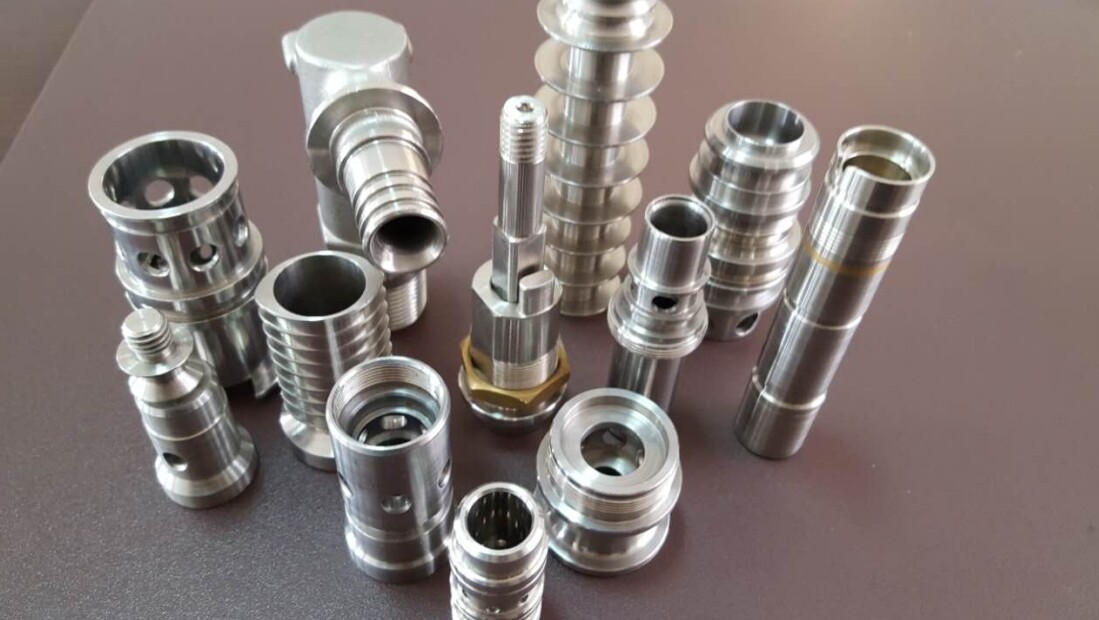The performance and durability of mechanical products is an important factor affecting the quality of parts processing, and parts processing quality which has a direct link with product quality.
- 1.process system vibration on the surface quality of the workpiece impact
In the machining process is often accompanied by vibration, in addition to the cutting process will be affected by vibration, the tool surface and the workpiece cutting surface there are also periodic vibration. In the machining process, vibration will affect the shape of the parts in the accuracy, resulting in surface roughness does not meet the standard, thus reducing the processing surface quality.
- 2.The influence of tool geometry parameters, material and sharpening quality on surface quality
In the geometric parameters of the tool, the factors that affect the surface quality of the parts are mainly: the main vice angle of deviation, the tip of the radius of the arc. In some cases, the appropriate adjustment of the main vice deflection angle and tip radius helps to control the surface roughness of the parts. In contrast, the surface roughness of high-speed steel tools than cemented carbide tools is more excellent, such as diamond and cubic ammonia boron tools, but due to diamond tools for some common iron materials have a high affinity, so you need to avoid taking this kind of tool processing paste materials. In addition, different tools before and after the surface, the roughness of the cutting edge will also affect the roughness of the machined surface, so in the machining production process should take appropriate control means to improve the quality of knife grinding.
- 3.The influence of cutting fluid on surface quality
In the cutting process, the friction between the interface will be reduced with the use of cutting fluid, at the same time the surface temperature will also be controlled with the cooling of the cutting fluid, can avoid plastic deformation of the cutting metal surface, and has a high degree of applicability in different properties of the processed material can be used to control the surface roughness of the processed parts.
- 4.Influence of workpiece material on surface quality
In the processing of plastic parts, after the feed, the surface of the machined parts will appear plastic deformation under the action of stress, in the process of removing the cutting chips on the surface of the machined parts, the surface roughness will also appear to be significantly increased. The stronger the toughness of the machined part material, the greater the degree of deformation, the worse the surface quality. In the processing of brittle parts, the cutting chips are usually crushed directly, and then a large number of dents will appear on the surface of the processing, and the roughness is improved. Generally, the surface of plastic materials with high toughness is rougher after machining, while on the contrary, it is smoother than smooth. For different processing materials, the larger the grain structure, the rougher the surface after processing. Therefore, in the control of processing surface quality, before the start of processing generally need to normalise the material, tempering and other treatments.
- 5.Influence of cutting conditions on the surface quality of the workpiece
Cutting conditions or processes such as cutting volume, lubrication and cooling will affect the machined surface quality. In the low and medium machining speed, the material surface may appear cutting chip accumulation, burrs, scales and other phenomena. And increase the cutting speed, it helps to control the processing surface quality. In general, in the processing of friable materials in the process of low speed processing is not too easy to appear the above phenomena, so the cutting speed does not affect the processing of friable materials surface exempted from duty. If the feed rate is increased, it will lead to the degree of plastic deformation increased, and at the same time increase the machining surface roughness. While appropriate to reduce the feed rate will help control the processing surface quality, but it should be noted that when the feed rate down to a certain standard, the processing surface quality will not appear again obvious changes. In general, the depth of cut for the processing of surface quality is not obvious, in the actual processing should be in accordance with the processing requirements to determine the reasonable depth of cut.
- 6.The effect of cutting speed on surface roughness
Generally speaking, in order to control the processing surface quality, need to reduce the roughing part of the cutting speed, improve the finishing part of the cutting speed. In the processing of plastic materials, if you take the low and medium speed cutting, it will lead to the processing of the surface plastic deformation degree increases, and then processing surface roughness. Slow or fast cutting of plastic materials is very effective in preventing the formation of chip tumours and is certain to reduce surface roughness.

